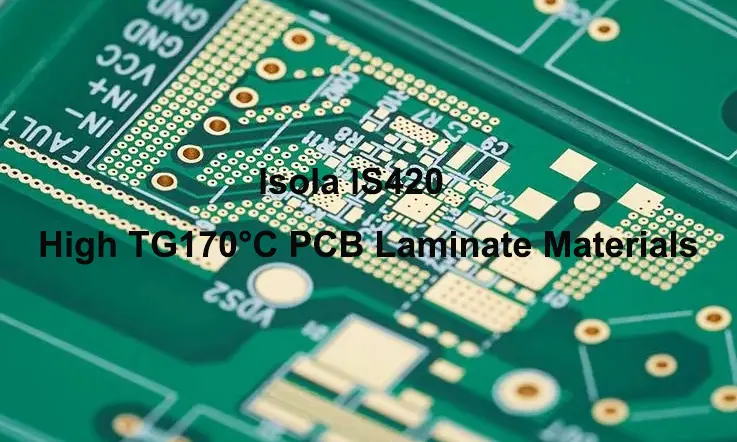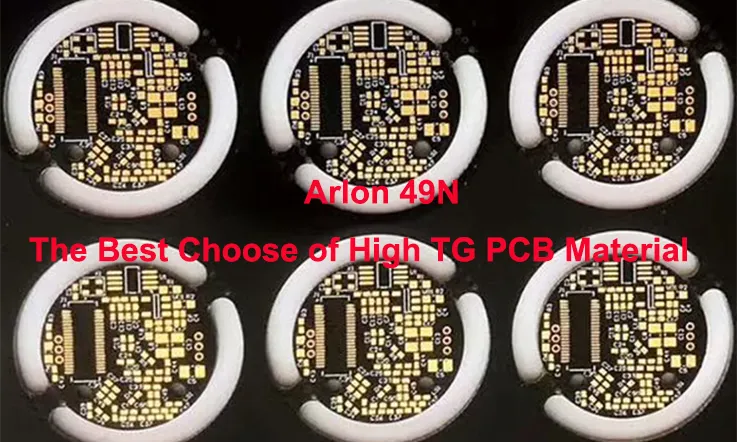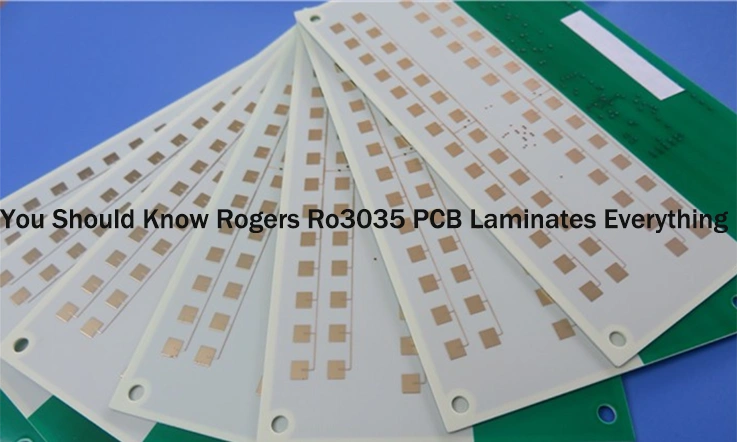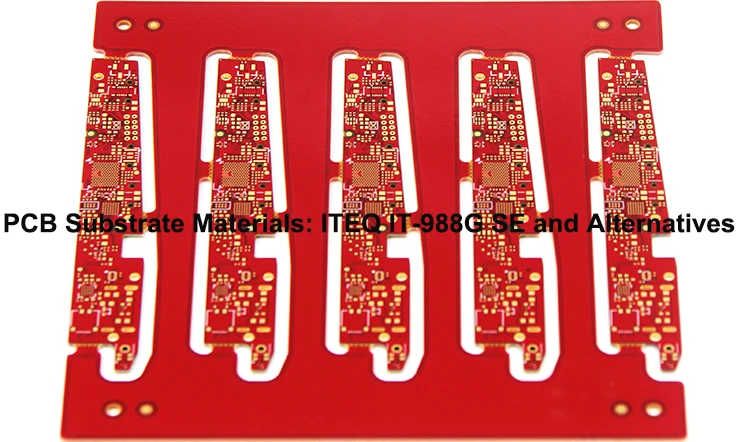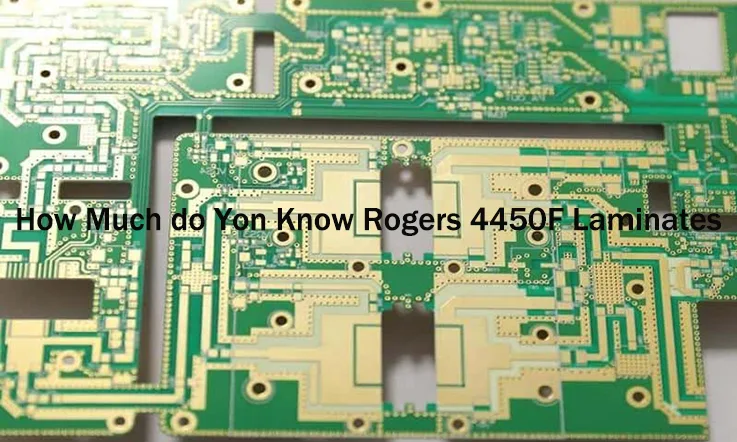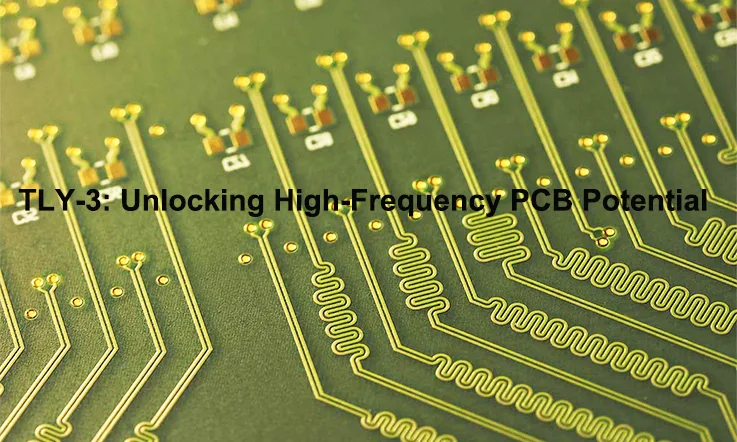
As electronic devices continue to evolve, the demand for high-frequency PCB designs that ensure optimal performance and signal integrity is on the rise. In this regard, Taconic TLY-3 laminates have emerged as a game-changing material for circuit board designers. With its exceptional electrical properties, mechanical strength, and thermal management capabilities, TLY-3 offers a compelling solution for tackling the challenges of high-frequency applications. This article aims to delve into the unique features and advantages of Taconic TLY-3 from the perspective of circuit board designers.
What Is Taconic TLY-3?
Taconic TLY-3 is a high-performance laminate material designed specifically for use in printed circuit boards (PCBs). It is a woven fiberglass reinforced composite that offers excellent dimensional stability and mechanical strength. TLY-3 laminates are engineered to have a low dissipation factor and a low dielectric constant, making them suitable for high-frequency applications, particularly in the automotive industry.
TLY-3 laminates are known for their high volume manufacturing capabilities, making them an ideal choice for mass production of PCBs. They exhibit superior performance in automotive radar systems operating at 77 GHz, as well as other antennas operating in millimeter wave frequencies.
With a dielectric constant ranging from 2.17 to 2.40, TLY-3 laminates provide flexibility in specifying the desired dielectric constant within this range, with a tolerance of +/- .02 for most thicknesses.
Benefits of Taconic TLY-3
Taconic TLY-3 offers several key benefits that make it a preferred choice for high-performance laminates in PCB applications:
Dimensional Stability:
TLY-3 laminates are manufactured using lightweight woven fiberglass, resulting in exceptional dimensional stability. This stability ensures that the laminate maintains its shape and size even under varying temperature and environmental conditions, reducing the risk of warping or distortion.
Lowest Dissipation Factor (Df):
TLY-3 laminates exhibit an extremely low dissipation factor, or Df, at high frequencies. This low Df allows for efficient signal transmission and minimal loss, making it suitable for high-frequency applications such as automotive radar systems and millimeter wave antennas.
High Peel Strength:
TLY-3 laminates are known for their high peel strength, which is the ability of the laminate to resist delamination or separation of layers. This high peel strength ensures the structural integrity of the PCB, even under demanding conditions or during assembly processes.
Low Moisture Absorption:
TLY-3 laminates have a low moisture absorption rate, meaning they are less prone to absorbing moisture from the environment. This characteristic helps maintain the electrical and mechanical properties of the laminate, ensuring consistent performance over time.
Uniform, Consistent Dielectric Constant (Dk):
TLY-3 laminates provide a uniform and consistent dielectric constant (Dk) across the material. This uniformity ensures predictable signal propagation and impedance control, leading to improved signal integrity and performance in high-frequency applications.
Laser Ablatable:
TLY-3 laminates are compatible with laser ablation processes. This feature allows for precise and controlled removal of material during manufacturing, enabling the creation of complex PCB designs with fine detail and accuracy.
Contrasting Taconic TLY-3 with alternative materials
When contrasting Taconic TLY-3 with alternative materials for PCB applications, some key factors to consider include electrical properties, mechanical properties, thermal properties, and cost. Here’s a comparison of Taconic TLY-3 with a commonly used alternative material, FR-4:
Electrical Properties:
Taconic TLY-3: TLY-3 laminates offer excellent electrical properties for high-frequency applications, including low dissipation factor and consistent dielectric constant across a wide frequency range. This makes them ideal for RF and microwave designs.
FR-4: FR-4 is a widely used standard material for PCBs and offers good electrical properties for general-purpose applications. However, it may not provide the same level of performance as TLY-3 for high-frequency designs.
Mechanical Properties:
Taconic TLY-3: TLY-3 laminates provide good dimensional stability and mechanical strength, making them suitable for designs with tight tolerances and demanding environmental conditions.
FR-4: FR-4 also offers decent mechanical properties, but it may not provide the same level of dimensional stability and strength as TLY-3 laminates.
Thermal Properties:
Taconic TLY-3: TLY-3 laminates have good thermal conductivity, allowing for efficient heat dissipation. They can handle high-power applications and are suitable for designs that require effective thermal management.
FR-4: FR-4 has moderate thermal conductivity and can handle average power dissipation. However, for high-power applications, additional heat sinking techniques may be required.
Cost:
Taconic TLY-3: TLY-3 laminates are typically more expensive than FR-4 due to their specialized properties and performance. The higher cost may be justified for high-frequency designs that require the unique characteristics of TLY-3.
FR-4: FR-4 is widely available and has a lower cost compared to specialized laminates like TLY-3. It is a cost-effective choice for general-purpose PCB applications.
Overall, Taconic TLY-3 laminates offer superior electrical performance, better dimensional stability, enhanced thermal management capabilities, and are well-suited for high-frequency applications. However, the higher cost and specialized nature of TLY-3 may make it less suitable for general-purpose PCB designs. FR-4, on the other hand, provides good all-around performance at a lower cost, making it a popular choice for standard PCB applications. The choice between TLY-3 and alternative materials ultimately depends on the specific requirements and constraints of the PCB design.
Design Guidelines and Considerations When Choose Taconic TLY-3
When choosing Taconic TLY-3 laminates for your design, there are several important guidelines and considerations to keep in mind:
Frequency Range: TLY-3 laminates are optimized for high-frequency applications. Consider the specific frequency range of your design and ensure that the laminate’s electrical properties, such as low dissipation factor and consistent dielectric constant, are suitable for your desired frequency range.
Signal Integrity: TLY-3 laminates offer excellent signal integrity. Consider the signal integrity requirements of your design, such as impedance control, signal loss, and skew, and ensure that TLY-3 laminates can meet those requirements.
Thermal Management: Evaluate the thermal management needs of your design, especially if it involves high-power applications. TLY-3 laminates have good thermal conductivity, but additional heat sinking techniques may be required for efficient dissipation of heat.
Dimensional Stability: TLY-3 laminates are dimensionally stable, but it’s important to consider the specific mechanical requirements of your design. If your design involves tight tolerances or demanding environmental conditions, ensure that TLY-3 laminates can provide the necessary dimensional stability.
Manufacturing Process: Consider the manufacturing processes involved in your design, such as laser ablation or PCB assembly. TLY-3 laminates are laser ablatable, which can be advantageous for creating intricate designs, but it’s important to ensure compatibility with other manufacturing processes involved in your design.
Material Thickness: TLY-3 laminates are available in various thicknesses. Choose the appropriate material thickness based on the mechanical and electrical requirements of your design.
Environmental Considerations: Evaluate the environmental conditions in which your design will operate. TLY-3 laminates have low moisture absorption, which can be beneficial in humid environments or applications where moisture resistance is important.
Compliance and Certifications: Ensure that TLY-3 laminates meet the necessary industry standards and certifications for your specific application, such as IPC-4101 or UL.
By considering these guidelines and design considerations, you can make an informed decision when choosing Taconic TLY-3 laminates for your design, ensuring optimal performance and reliability.
PCB Fabrication Techniques Using Taconic TLY-3
Taconic TLY-3 laminates can be used in various PCB fabrication techniques. Here are a few common techniques that can be employed when working with TLY-3 laminates:
1.Laser Ablation:
TLY-3 laminates are laser ablatable, making them suitable for creating intricate and precise circuit patterns. Laser ablation involves using a high-powered laser to selectively remove the copper layer from the laminate, creating the desired circuit traces and patterns. This technique is commonly used for high-frequency PCB designs that require precise control over impedance and signal integrity.
2.Chemical Etching:
Chemical etching is another commonly used technique for PCB fabrication using TLY-3 laminates. In this process, a chemical solution is used to selectively remove the unwanted copper from the laminate, leaving behind the desired circuit traces. This technique is suitable for designs that do not require extremely tight tolerances or intricate patterns.
3.Through-Hole Plating:
TLY-3 laminates can be used in through-hole plating processes, where copper is deposited inside drilled holes to create electrical connections between different layers of the PCB. Through-hole plating can be achieved using techniques such as electroless plating, which involves depositing a conductive layer inside the drilled holes, and electrolytic plating, which uses an electric current to enhance the plating process.
4.Surface Mount Technology (SMT):
TLY-3 laminates can be used in SMT processes, where components are mounted directly on the surface of the PCB without the need for drilled holes. SMT involves applying solder paste to the PCB, placing the components on the paste, and then reflowing the solder to create electrical connections. TLY-3 laminates provide good solderability and thermal stability, making them suitable for SMT applications.
5.Multilayer PCBs:
TLY-3 laminates can also be used in the fabrication of multilayer PCBs, where multiple layers of circuitry are stacked together to achieve higher circuit density. The laminates can be used as the core material for the inner layers and as the prepreg material for bonding the layers together. Multilayer PCBs offer increased routing complexity and can be used in high-density applications.
Applications of Taconic TLY-3
Taconic TLY-3 laminates find applications in various industries and high-frequency electronic systems. Some of the specific applications include:
Automotive Radar:
TLY-3 laminates are widely used in automotive radar systems operating at frequencies around 77 GHz. The low dissipation factor and consistent dielectric constant of TLY-3 help ensure efficient signal transmission and accurate radar performance.
Satellite/Cellular Communications:
Taconic TLY-3 laminates are suitable for satellite and cellular communication systems that operate at high frequencies. Their low loss and stable electrical properties make them ideal for applications such as satellite antennas, cellular base stations, and microwave communication systems.
Power Amplifiers:
TLY-3 laminates can be used in power amplifier circuits, especially those requiring high-frequency operation. The laminates’ low dissipation factor helps minimize power losses and maximize amplifier efficiency.
LNBs, LNAs, LNCs:
TLY-3 laminates are suitable for low-noise block downconverters (LNBs), low-noise amplifiers (LNAs), and low-noise converters (LNCs) used in satellite communication systems. The laminates’ low loss and stable properties contribute to the overall performance and reliability of these components.
Aerospace:
Taconic TLY-3 laminates are used in various aerospace applications, including radar systems, communication systems, and avionics. The laminates’ high performance, dimensional stability, and low moisture absorption make them well-suited for the demanding requirements of the aerospace industry.
Ka, E, and W Band Applications:
TLY-3 laminates are commonly used in applications operating in the Ka, E, and W bands, which are frequency ranges commonly used in satellite communication, radar systems, and wireless communication. The laminates’ low loss and consistent electrical properties make them suitable for these high-frequency applications.
Final Thoughts
Taconic TLY-3 laminates have proven to be an invaluable asset for circuit board designers working on high-frequency applications. With their superior electrical properties, mechanical strength, and thermal management capabilities, TLY-3 offers a competitive edge in achieving optimal performance and signal integrity. Whether it is RF and microwave designs, high-power applications, or designs requiring efficient thermal management, TLY-3 laminates have consistently demonstrated their ability to meet the demanding requirements of modern electronic devices.
As the field of electronics continues to advance, Taconic TLY-3 remains at the forefront of innovation, empowering designers to push the boundaries of high-frequency PCB designs. By leveraging the unique properties of TLY-3, circuit board designers can unleash the full potential of their designs, delivering cutting-edge solutions that drive progress in various industries. With its unwavering commitment to excellence, Taconic continues to be a trusted partner for circuit board designers seeking to optimize performance, reliability, and efficiency in their high-frequency designs.

